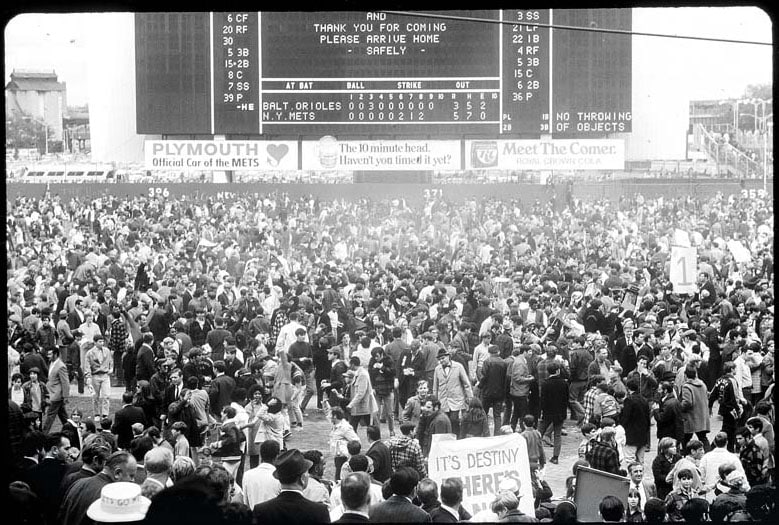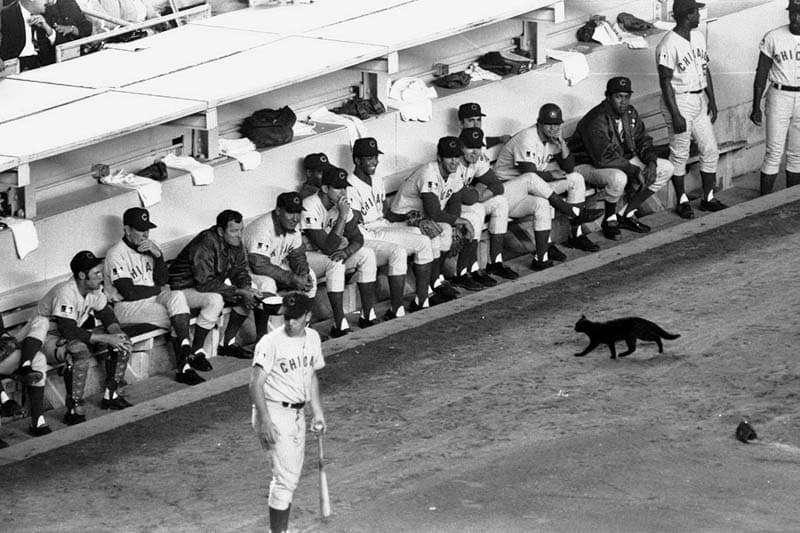
Writing the history of major league baseball in the United States would take volumes. The game, invented by Americans, has ruled as the National Pastime since the turn of the century. The story of New York baseball and the game itself are one and the same. With the New York Giants, New York Yankees, Brooklyn Dodgers and New York Mets, more World Series banners have been rung up in New York than other big league cities combined.
The National League took shape in 1876. The American League followed in 1901. Being the largest city in America, New York had its share of teams: The New York Giants were born in 1883, the Brooklyn Dodgers the next year in 1884 and New York Highlanders (later the Yankees) in 1901.
In its early decades, John J. McGraw’s mighty Giants ruled the sporting scene. McGraw was a gruff character during an era when spitballs, sharp spikes and low-scoring games ruled the roost. The Giants’ ace was Christy Mathewson, an All-American type straight out of a Wheaties box cover. McGraw’s legacy was prodigious: From 1902 to 1937, the “Jints” won 10 pennants and four World Series crowns.
Up in Boston, another storm was brewing. The Boston Red Sox fielded their own powerhouse, with the young Babe Ruth providing muscle on the mound and in time, as a budding slugger. Ruth, as ever, was hard to handle. A 1919 salary holdout was the final straw. The Sox sold the Babe to New York. The man and the moment had met. Ruth’s prodigious slugging talents revolutionized the game forever. It also sparked the Yankees to American League titles. The Bombers were mere tenants at McGraw’s Polo Grounds. They were also outdrawing the Giants. An enraged McGraw kicked the Yankees out. Team management promptly constructed The House That Ruth Built across the Harlem River in the Bronx. From the 1920s to the 1940s, the Yankees dominated New York baseball, winning 16 pennants and 12 World Series titles. As Ruth aged, the Bombers signed a young Joe DiMaggio from the Pacific Coast League. Joining Lou Gehrig, Tony Lazzeri, Charlie Keller, Frank Crosetti, Lefty Gomez and Red Ruffing, another Yankee dynasty was born. After decades of slumber, the Brooklyn Dodgers made a comeback, winning the pennant in 1941, led by the irascible Leo Durocher, a man as much a part of New York baseball lore as Ruth or Gehrig. ‘Dem Bums’ lost the Series to the lordly Yankees, but greater days were ahead.

By 1945, the war was over. New York was the capital of the world and with it, the nerve center of baseball. Branch Rickey, the Dodgers’ intrepid general manager, moved the franchise along by signing Jackie Robinson. The second baseman joined a lineup that already boasted Duke Snider, Carl Furillo and Pee Wee Reese. Injuries caught up with the invincible DiMaggio. No matter. Mickey Mantle, a young, switch-hitting phenom from Oklahoma, dominated the game with one prodigious tape measure shot after another. Fired from his Dodger job, Durocher signed on as manager of the Giants. New York’s Golden Age was in place. From 1947 to 1956, every World Series, save for 1948, featured a New York team. The Yankees still dominated, defeating the Dodgers in 1947, 1949, 1952, 1953 and 1956 and the Giants in 1951. The baseball gods granted the long-suffering Dodger fans a World Series triumph in 1955, while Durocher and his young phenom, Willie Mays, won the world title in 1954. The era, however, belonged to George Weiss and Casey Stengel. Weiss could be ruthless: He stiffed players out of raises, predicting that it would make them work that much harder for much-needed World Series money. Weiss also signed Stengel as manager. The latter was no clown. He nurtured young talent along, he introduced platooning, he also used starting pitchers such as Allie Reynolds as relievers in key World Series situations. Year in and year out, Stengel out-managed his competitors.
Nothing gold, as the poet reminds us, can stay. The ‘50s saw the triumph of night baseball. A suburbanized New York no longer had the desire to take the trek to Harlem or East Flatbush. In 1957, the inevitable took place: Both the Giants and then, incredibly enough, the Dodgers, left a heartbroken New York for all the gold in California. The Yankees rolled along. From 1958 to 1964, they won six pennants and three world titles, capped by Roger Maris’s 61 home run season in that same year, 1961.
In 1962, National League fans gleefully welcomed the New York Mets to town. Yankee management, on the other hand, had made rock-headed moves, firing Stengel and Weiss after the 1960 World Series loss to Pittsburgh and later, Yogi Berra as skipper, following a tough 1964 World Series loss to the St. Louis Cardinals. A long winter set in at the fabled Yankee Stadium, broken by the 1973 purchase of the team by the mercurial shipbuilder George Steinbrenner and his on-again, off-again skipper, Billy Martin. From 1976 to 1981, the Bombers won five division titles, four pennants and two World Series during a Bronx Zoo era, that was markedly different from the quiet dynasties of past epochs. Still, George and Billy—and Bob Lemon—got the job done.
In the early 1960s, Stengel and Weiss were back in action, this time with the Mets. Casey implored the “youth of America” to come to New York and play for the “Metsies.” The methodical Weiss built a winning team, signing Cleon Jones, Ed Kranepool, Tug McGraw, Ron Swoboda and Bud Harrelson. With Tom Seaver as ace and Gil Hodges in the dugout, the stage was set for the Miracle Mets of 1969. In 1986, the Mets won another world title, even though fans expected more from the ill-fated Dwight Gooden, Darryl Strawberry and Lenny Dykstra era. Meanwhile, the new Yankee dynasty, the storied Joe Torre-Derek Jeter-Paul O’Neill-Mariano Rivera squads, was anything but disappointing. From 1996 to 2001, more glory: Five pennants and four World Series crowns.
The two greatest games in baseball history were played in New York. In 1951, Bobby Thomson’s ninth-inning, three-run home run won the pivotal game of a three-game playoff series with the Dodgers, sweeping the Giants into the World Series. Who can forget the photo of the losing pitcher, Ralph Branca, sprawled out in the Dodger clubhouse, weeping uncontrollably, while Cookie Lavegetto puffed on a cigarette, consoling his broken teammate? Five years later, the nation’s attention was focused on Yankee Stadium, where Don Larsen pitched the only perfect game in World Series history, defeating the Dodgers, 2-0 before 70,000 fans. This was an era before exploding scoreboards and loud rock music. The entire stadium was so quiet that fans could hear Stengel and his coaches barking out orders to outfielders, while the Number 4 IRT line rumbled behind the right field bleachers. When Larsen struck out Dale Mitchell to achieve human perfection, a photo set in time: A joyful Yogi Berra leaping into Larsen’s arms. Why not? It was another iconic moment in a baseball city where history is always being made.



















